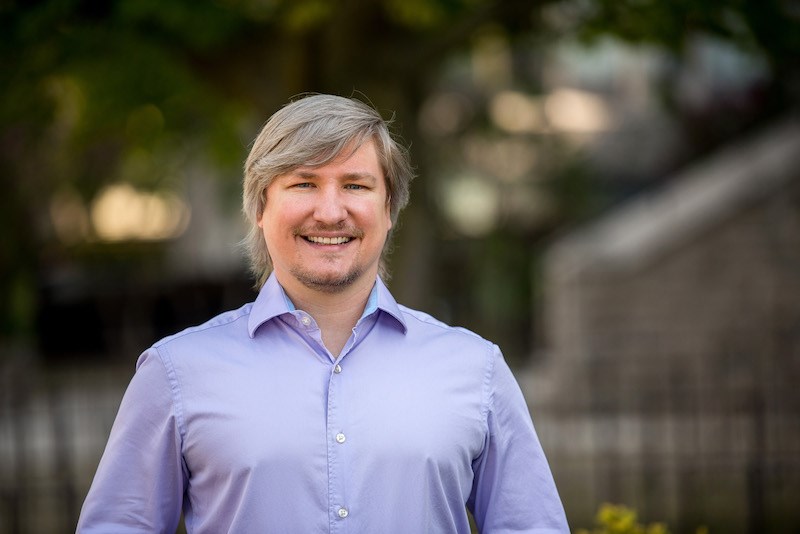Designing an exoskeleton backpack to reduce the energy needed for walking isn’t necessarily what Michael Shepertycky saw himself doing when he left Thompson to attend Queen’s University over a decade ago, but the roots of that research were established by projects he worked on before high school graduation.
“I really owe a lot of who I am today, the engineer that I am today, to growing up in Thompson,” says Shepertycky, who completed his undergraduate, master’s and PhD degrees at Queen’s in Kingston, Ontario. “Working in my neighbour’s garage and building my dune buggy and working on snowmobiles got me interested in the mechanical side [of engineering].”
He focused on mechanical engineering with a specialization in biomechanics while completing his bachelor’s degree and then in biomedical engineering during his graduate studies.
“The biomechanical side really sparked my interest in helping people,” Shepertycky says.
Arriving where he is today, as co-author of a study on a unique exoskeleton system that has been published in the academic journal Science, has been a long process for Shepertycky and the researchers he works with, as they embarked on the project before he began his fourth year of undergraduate studies.
“It’s been really exciting to finally see all of our work be recognized at a pretty prestigious international level,” he says. “Starting out til now has been a lot of late nights, a lot of hard work and it’s great to see the whole team’s efforts be recognized. I never, never saw this at all happening.”
Unlike other exoskeletons, which help people walk by adding power to their stride or taking it from once part of the gait cycle and adding it to another, this one replicates a function the body already performs – removing energy during the later part of swinging your leg forward, just before your heel hits the ground.
“Naturally your hamstrings actually remove that energy for the body so they act like a natural brake,” Shepertycky says. “How our device actually removes that energy for you is while you swing your leg you actually pull a cable and that pulling of the cable actually drives a generator and that generator takes that kinetic energy and then converts it into electricity.”
Even accounting for their mass of the lightweight exoskeleton backpack, which is attached to each leg just above the ankle by a wire, the metabolic cost of walking – the amount of calories you need to power the task – is reduced by about 2.5 per cent, which cold be vital to people spending long hours on their feet, like mail carriers.
“Anybody who’s on their feet all day walk around,” Shepertycky said.
Because the removed energy is captured and stored to power the device’s electrical controls, it is adaptable to different situations, unlike a passive walking assistance exoskeleton, but also independent of an external power source, unlike an active exoskeleton system. It captures more energy than the controls need, which means it can help power other devices.
“[My dad’s} a geologist and he works in Thompson,” Shepertycky says. “We always talk about geologists out in the field having to go walk and check out outcrops so it could help them.”
The next steps for he exoskeleton include incorporating different control techniques for users and exploring commercialization so it can be put to practical use on a wider scale.
“I would like to thank everybody in Thompson from my teachers, friends and family that really, really got me to this position,” Shepertycky says. “I truly loved being in Thompson.”




